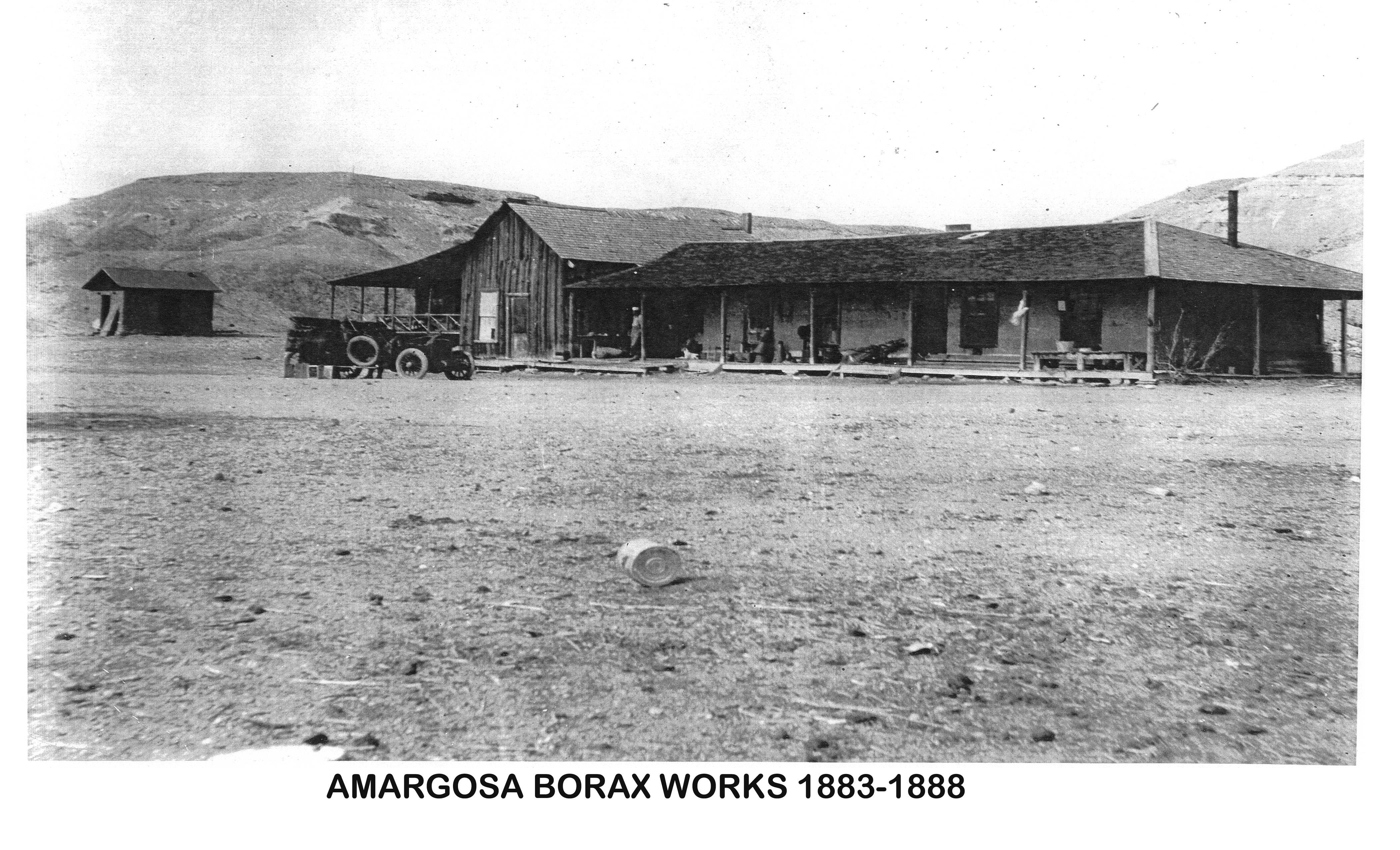Last Updated on Wednesday, 10 August 2011 10:02 Written by Death Valley Videos Tuesday, 12 July 2011 14:43
The Twenty Mule Team Trail - Part 4
The Heart of Death Valley
The remains of Harmony Borax Works in the heart of Death Valley National Park
As soon as William Tell Coleman bought the claims from Aaron and Rosie Winters in 1881 (Part 3) he went about setting up his borax operation. He established the Meridian Borax Corporation and two primary operations were created. One in the heart of Death Valley he called Harmony, near a large salt playa which contained borax. The other was near a deposit in the Valley to the East of Death Valley and was named for that valley: The Amargosa Works . 'Amargosa' means bitter water and the valley was named for the underground river which flows its length. The Amargosa Valley is 2,000 feet higher in elevation, just cool enough in summer that the plant could operate.
The photograph above was taken after the Death Valley and Amargosa Operation shut down (note the car). This area is located just south of Shoshone Village on Highway 127 in California.
Supplies and equipment to set up the operations were brought up by wagons in 1882 and men were recruited to work in the valley named "Death"! Some took one look at the place and left. Chinese laborers were brought in to scoop up the borax off the valley floor just as they had done throughout Nevada. The railroads had arrived close enough to the valley (165 miles - similar to distances of shipments in Nevada) to make hauling possible. In 1883 Coleman started hauling borax out of the Amargosa Works first, then out of Death Valley's Harmony works in Death Valley. For about a year he contracted with Charles Bennett of Pahrump to haul out the borax, then decided to build his own wagons and hire his own teams of mules.
The Harmony Borax Operation in 1883 - prior to the building of the large wagons.
Note the enclosed boiler building in the background (as opposed to the exposed adobe remains) and the barn where the sacked borax was stored.
Coleman had his wagons built in the California desert town of Mojave. Though he had his engineer study the most popular wagons of the day, Coleman's wagons were unique, having 7 foot rear wheels and 8 inch iron tires for the desert sand. Today only one in tact set of the borax wagons remain, at the Harmony Borax Site.
It's amazing how tall these wheels are when you stand next to them!
The wagons could carry 11 tons each. The entire outfit consisted of two ore wagons and a water wagon hitched in the rear. A team of 20 mules hitched in pairs stretched in front of the wagons for more than 120 feet. The entire outfit fully loaded weighed 36.5 tons or 73,000 pounds. It's about the same weight as a big-rig truck today. Coleman's operation lasted only 5 years from 1883-1888 because he made a bad investment in raisins and lost a fortune. He had to sell off the operation. Today you can visit the Harmony Borax Works in Death Valley and see where William Coleman started a legend. In the next episode of the 20 Mule Team Trail - We'll talk about the Mules! For the entire story see "The Twenty Mule Team of Death Valley."
If you plan on visiting the site of the original Harmony Borax Works see: Nevada Silver Trails











